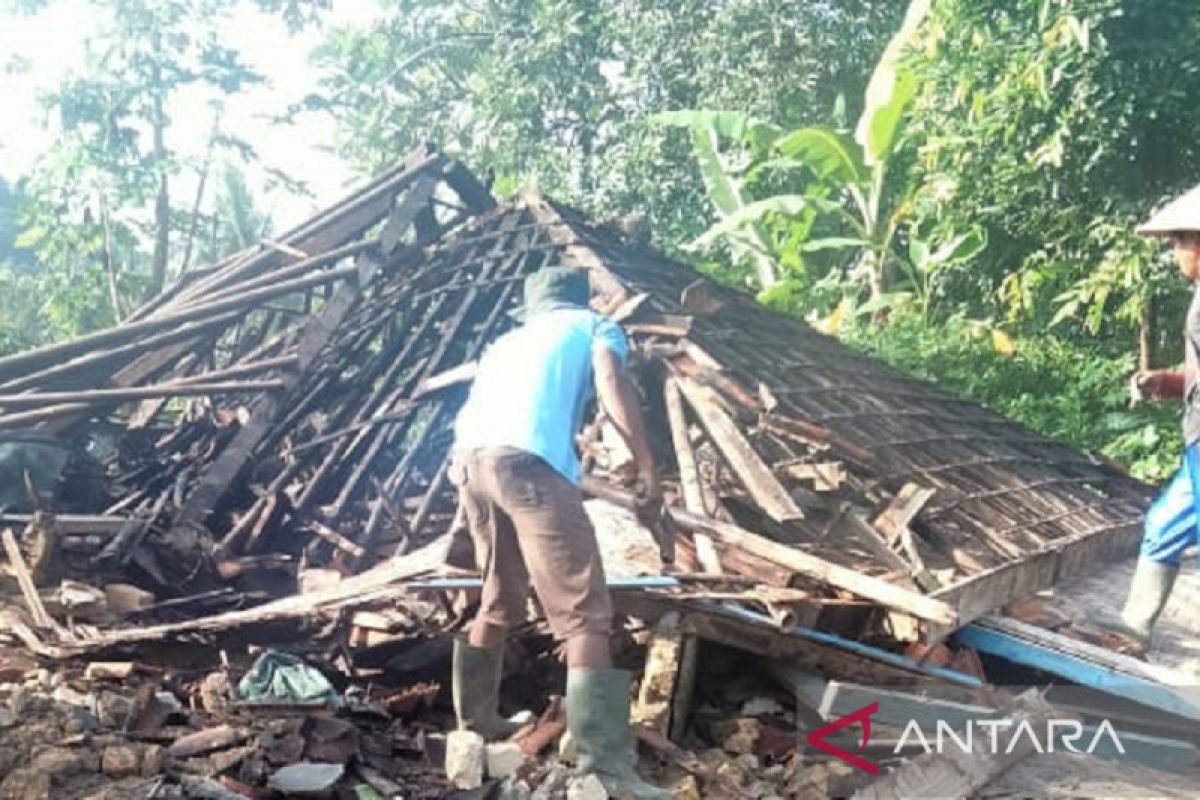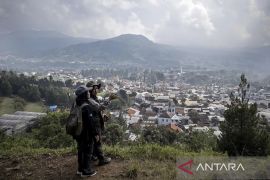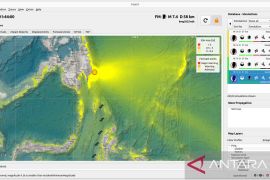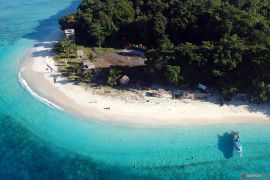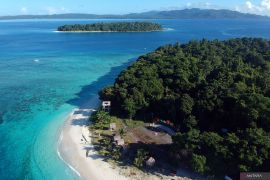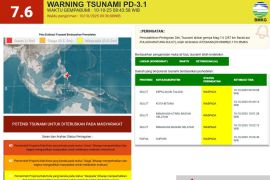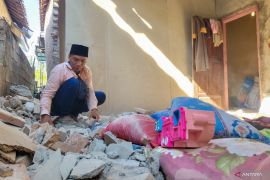The earthquake of medium depth in the Banda Sea is still very active and can trigger a strong earthquakeJakarta (ANTARA) - Earthquakes are common in parts of Indonesia, the world's largest archipelagic nation located in the Pacific Ring of Fire, a horseshoe-shaped region of converging tectonic plates and several active volcanoes.
The most powerful earthquake to have struck in modern-day Indonesia was a magnitude-8.9 quake that triggered a subsequent devastating tsunami in Aceh and Nias (North Sumatra) on December 26, 2004.
The deadly tsunami from the Indian Ocean killed around 168 thousand people in the Indonesian westernmost province of Aceh and Nias, rendered almost a million people homeless, and destroyed around 80 percent of the infrastructures in the worst-hit areas. Some 130 thousand people went missing due to the huge waves.
The latest earthquakes included a strong 7.4-magnitude earthquake that hit Southwest Maluku on Dec 30, 2021, owing to the rock deformation during the subduction of tectonic plates and hence called an intraplate earthquake.
"The earthquake of medium depth in the Banda Sea is still very active and can trigger a strong earthquake," Daryono, coordinator for Earthquake and Tsunami Mitigation at the Meteorology, Climatology and Geophysics Agency (BMKG), stated.
The earthquake had a thrust fault mechanism due to strong pressure from within the subducted tectonic plates, he added.
Related news: 4.2-magnitude earthquake jolts Papua's Jayapura district
Related news: Poor building designs reflect lack of disaster preparedness: BMKG
Meanwhile, the BMKG recorded more than 61 earthquakes of varying magnitudes, up to 5.5 magnitude, and depths struck North Halmahera District, North Maluku, on January 8-10, 2022.
Considering the pattern, the shocks might develop into earthquake swarms, according to Daryono.
Earthquake swarms are series of quakes occurring with relatively small magnitude, though of very high frequency and lasting for quite long periods of time in a limited area.
North Halmahera District Regional Disaster Mitigation Agency (BPBD) reported that 57 houses and four public facilities were damaged.
The country’s latest and strongest earthquake was a 6.6-magnitude (M) earthquake that rattled Banten Province on January 14, 2022, damaging several buildings and public facilities, though there were no reports of casualties.
According to the National Disaster Mitigation Agency (BNPB), 3,078 houses, 51 school buildings, 17 health facilities, eight government offices, three kiosks, and 21 worship places were damaged in Lebak, Pandeglang, Serang, Tangerang, Sukabumi, and Bogor districts.
Deputy for Geophysics at the BMKG Suko Prayitno Adi stated that the Banten quake could serve as a lesson for disaster mitigation preparedness.
"The incident is a lesson for us to share our knowledge and readiness on disaster mitigation, so that we can provide the best solution," he noted during a webinar on the Banten earthquake on Jan 21, 2022.
By sharing experiences, the fears of people living in earthquake-prone areas in the southern Java regions can be alleviated, he stated.
In the meantime, repeated aftershocks in the Sunda Strait have become the subject of much research, according to Raditya Jati, deputy for systems and strategy at BNPB.
Recently, scientists have shared concerns about the Sunda Strait megathrust since it is a tectonically active seismic gap, he remarked.
Thus, knowledge management on the issue should be developed together, as it is required to build resilience to disasters, he added while speaking during the same webinar.
It is because the earthquakes and tsunamis that occurred in the Sunda Strait have caused significant social and economic losses as well as disrupted the people's daily lives, he explained.
Hence, collective awareness on disaster mitigation and building infrastructure resilience must be developed in the community, especially in areas with the potential for earthquakes, he stated.
Based on a survey conducted by BNPB, the construction quality of most of the buildings affected by the quake in Banten Province was below standard.
Nationally, the BNPB recorded 3,058 major natural disasters across Indonesia from January 1 to December 28, 2021. The natural disasters included 1,288 major floods and 31 powerful earthquakes of which 26 were destructive quakes.
From January 1 to December 19, 2021, a total of 8.26 million people were impacted by natural disasters in Indonesia and had to evacuate. The disasters also claimed 654 lives, rendered 93 people missing, and injured 14,105 others.
Furthermore, BMKG Head Dwikorita Karnawati reported that the frequency of natural disasters in Indonesia had continued to increase.
The average number of earthquakes recorded during the 2008-2016 period reached five to six thousand a year, while in 2017, the number increased to 7,169. This figure further climbed to more than 11,500 in 2019.
Between 1600 and 2021, some 246 tsunamis were recorded in Indonesia, she pointed out.
In the context of climate change, 2016 was the hottest year, with an anomaly value of 0.8 degrees Celsius during the observation period from 1981 to 2020. The second-hottest year was 2020, with an anomaly value of 0.7 degrees Celsius, while 2019 was the third-hottest year, with an anomaly value of 0.6 degrees Celsius, she stated.
This also resulted in the melting of snow in Puncak Jaya, Papua. Initially, the snow-covered area spanned around 200 square kilometers (sq km), though now, only 2 sq km, or one percent, is left.
Another phenomenon has been the emergence of the seroja tropical cyclone that triggered flash floods and landslides in East Nusa Tenggara on April 2021, she noted.
The cyclone phenomena is very rare in tropical areas, such as Indonesia. However, in the last 10 years, tropical cyclones have become more frequent, she added.
"Precautionary measures must be taken in this condition through strong mitigation efforts by all parties and elements of society, including ulemas and religious leaders. Otherwise, the impact will be difficult to handle," she remarked.
Hence, Karnawati has called on ulemas to play a bigger role in increasing the people's literacy regarding disaster prevention and mitigation, as almost all parts of Indonesia are disaster-prone areas.
"Natural disasters cannot be avoided, but we can try and prepare to reduce the risk," she remarked.
Karnawati is optimistic that the involvement of ulemas and religious leaders in educating the community regarding disasters would accelerate the realization of a disaster-resilient community. Thus, the target of zero victims in natural disasters can be achieved.
Moreover, the poor concept of buildings and spatial planning for residential areas indicate that the public is ill-prepared to face disasters, according to Karnawati.
"It is not an earthquake that causes casualties or injuries in every incident. On the contrary, it was the result of a building tumbling down," she noted.
Hence, she sought the participation of the Association of National Construction Experts in solving the problem by disseminating and promoting the need to impose stricter regulations in constructing earthquake-resistant buildings in areas or zones at risk of earthquakes.
Related news: Mitigation efforts after Banten quake
Related news: 6.1-magnitude earthquake rattles Talaud Islands in North Sulawesi
Editor: Sri Haryati
Copyright © ANTARA 2022
